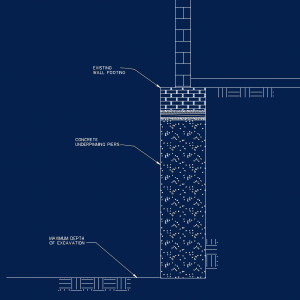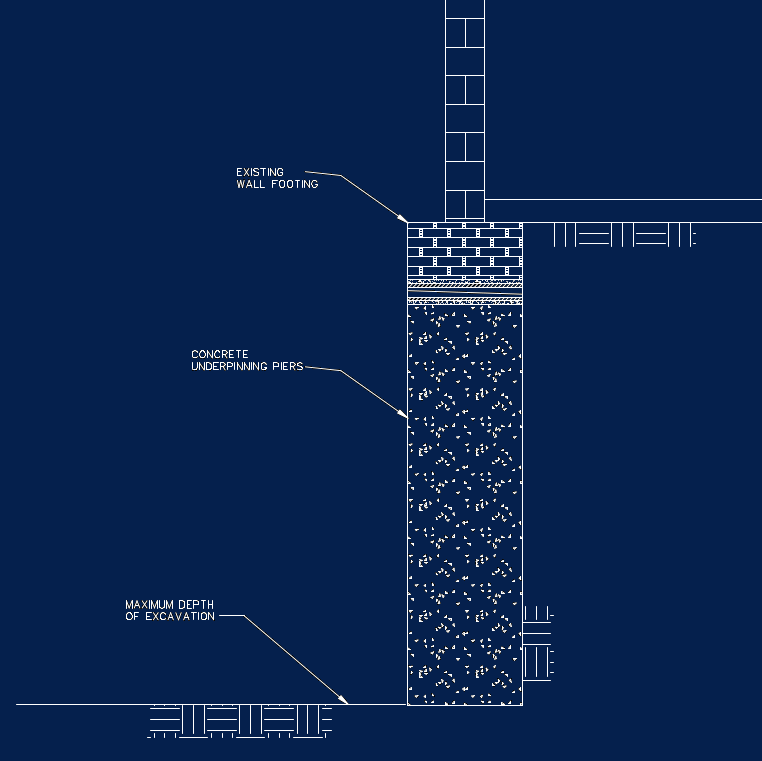Underpinning is the term applied to a variety of techniques used to re-support the foundation system for an existing structure when it is compromised or needs additional capacity, or if foundation support needs to be transferred to a deeper level to allow work that would otherwise cause foundation movement and damage to the structure. While underpinning is often considered to be a contractor’s “means and methods” it is common for the underpinning to become part of the permanent foundation system for the structure.

Underpinning is a type of specialty construction with unique risks that can threaten the success of a project. Most underpinning systems are deceptively simple on paper. However, in practice, the design of an underpinning system must account for the behavior of the existing structure, the sequence of construction and the time-dependent and sometimes complex load and support conditions. Some underpinning systems require non-trivial structural engineering for their design. Knowledge and experience with best practices are crucial for designers and constructors, alike.
Richard J. Driscoll, Consulting Engineer (RJDCE) provides breadth and depth of experience with underpinning design and construction, as well as supporting structural and foundation engineering capabilities. This allows RJDCE to provide reliable, cost-effective design solutions for underpinning projects and help project stakeholders manage risk. In addition, RJDCE can review underpinning submittal for the design team, third-party owners of underpinned structures and others, as well as perform forensic investigations of underpinning performance failures.
See also: Contractor Services, Forensic Engineering, Foundation/Geostructural Engineering, Existing Structures, Micropiles, Protection and Monitoring, Risk Management, Support of Excavation
Publication: What a Building Owner Should Know About Underpinning
